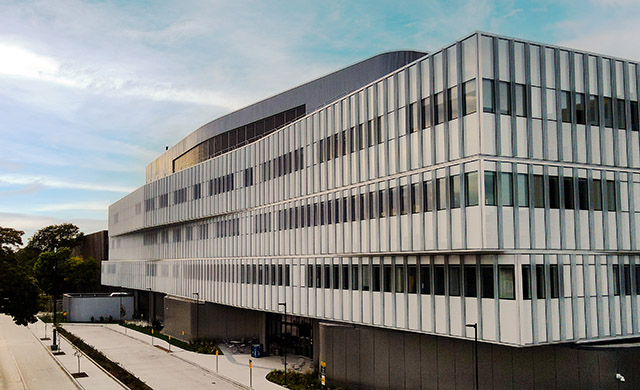University of Wisconsin-Milwaukee Debuts New Chemistry Building
The University of Wisconsin-Milwaukee in Milwaukee, Wis., recently celebrated the grand opening of a new Chemistry Building, according to a news release. The facility measures in at 163,400 square feet, stands four stories, and has the capacity for about 5,000 chemistry and biochemistry students. The university partnered with Kahler Slater and CannonDesign for the project’s design and with VJS Construction Services, Inc., for its construction.

Photo courtesy of Kahler Slater
The previous building had aged out of usefulness, and the new one was designed to provide advanced learning environments for more modern healthcare and STEM-related courses and research. According to the news release, the building’s structure resembles protein and lattice structures found in chemical research. Amenities include academic spaces, lecture halls, offices, formal and informal collaboration space, and modern lab spaces separated by breakout zones.
According to the news release, the building’s interior features glass walls to foster collaboration and create transparency. The ultimate goal of the space is to “offer flexibility and adaptability to support teaching and research innovation and connect researchers, students, and the community through science,” the news release reports.
About the Author
Matt Jones is senior editor of Spaces4Learning. He can be reached at [email protected].